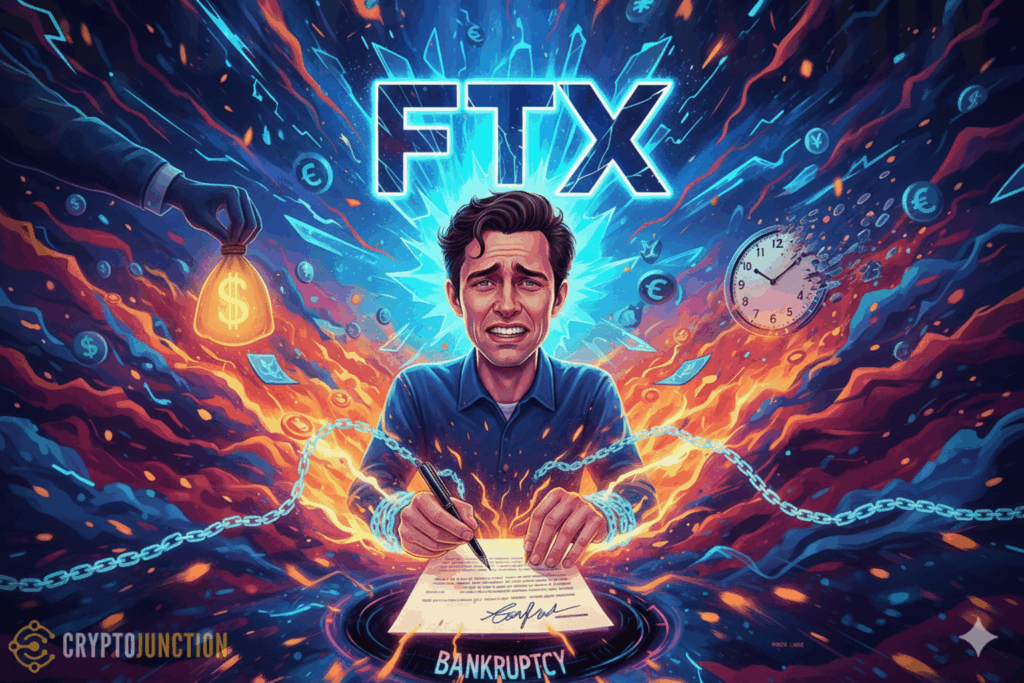In a recent interview with Mother Jones, Sam Bankman-Fried claimed that his downfall wasn’t sealed by market crashes or regulators but by his own signature. He said, “The single biggest mistake I made by far was handing the company over.”
That one decision, made on November 11, 2022, when he handed control of FTX to John J. Ray III, became the point of no return. Within hours, Ray filed for bankruptcy. What SBF didn’t expect? Just minutes after signing, he received a call — one that could have changed everything.
According to him, it was a potential investor ready to inject fresh capital into FTX. A lifeline. But it was too late — the ink had already dried, and FTX was already spiraling into legal oblivion.
The tragedy here isn’t just financial — it’s cinematic. Imagine you are seconds away from saving your empire, only to realize that your own decision has tied your hands. Today, Sam Bankman-Fried lives with that nightmare.
Sam Bankman-Fried vs. The New FTX Era
The man who replaced him, John J. Ray III, is no stranger to corporate chaos — he famously handled Enron’s bankruptcy. But for SBF, Ray’s arrival marked the death of any hope of revival. Ray immediately filed for Chapter 11 and brought in the heavyweight law firm Sullivan & Cromwell (S&C) to take charge. Ironically, S&C had recommended Ray to SBF just two days before the collapse.
What followed was a legal gold rush. S&C reportedly earned over $171.8 million in fees from the FTX bankruptcy proceedings by mid-2024. Meanwhile, a group of creditors even sued the firm in early 2024, accusing it of having profited from FTX’s downfall — though that case was quietly dismissed later that year.
For many in the crypto world, this feels less like justice and more like irony. The man who built FTX is in prison, while those managing its ashes walk away with millions. It’s a twist that even Hollywood would struggle to script.
Sam Bankman-Fried’s Legacy and the Road to Redemption
Even after nearly three years, FTX’s ghost still haunts the crypto markets. The exchange has so far repaid around $7.8 billion to creditors and is expected to return another $8.7 billion, totalling roughly $16.5 billion in recovered assets.
Most creditors will now receive 118% of their original account balances, marking a surprisingly strong recovery in a crypto bankruptcy case. But for Sam Bankman-Fried, the numbers mean little. Digital history now records his reputation — once defined by brilliance and innovation — as a cautionary tale.
And perhaps that’s why his recent confession hit so hard. It wasn’t about clearing his name — it was about acknowledging the one moment he couldn’t undo. In his words, handing over FTX wasn’t just a legal move. It was surrender.
The man who once redefined crypto trading now finds himself reflecting on the one decision that sealed his fate — not the fall of markets, but the fall of trust. And somewhere in that regret lies a lesson that echoes far beyond FTX: sometimes, the smallest signatures make the biggest collapses.
Conclusion
People will forever remember the collapse of FTX as a turning point in crypto history. Sam Bankman-Fried’s own words reveal a deeper truth — once someone surrenders power, they can never reclaim it. Whether you see him as a villain or a visionary undone by pride, his story remains one of the most riveting in the digital age — a reminder that in crypto, as in life, every move counts.

